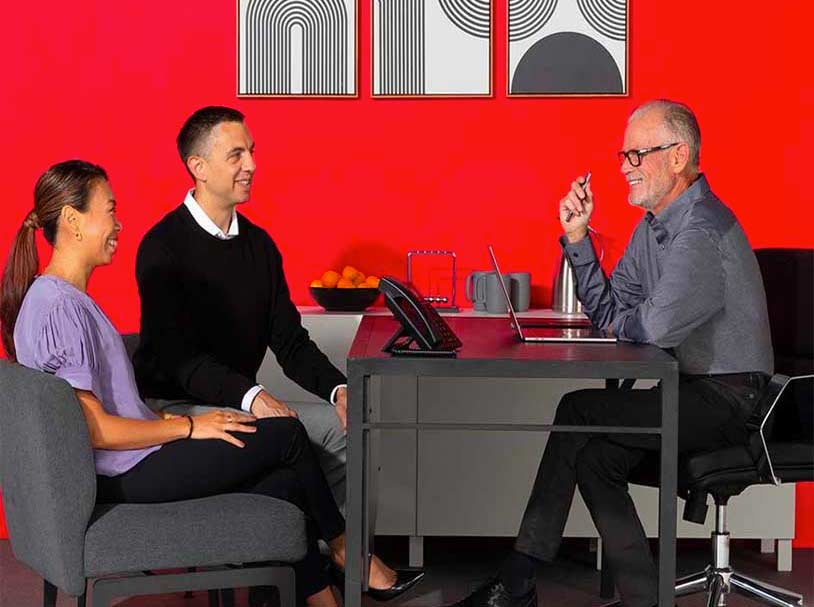Know when to use call park, call transfer or call hold
Key Points
• Learn the difference between Call Park, Call Transfer and Call Hold
• Find out the best ways to use each for your business

Your cloud-based business phone service has loads of features you can take advantage of to be more efficient and give customers a better experience, including call management. However, if you’re new to this, figuring out how to use call management can be a bit tricky.
So we’ve created this guide to help you understand the difference between call park, call transfer and call hold and the best times to use them. Let’s dive in.
Call Park
What is call park? If you’re thinking you have to parallel park your phone call, no worries there. Call park does essentially “park” your call in a user-defined “parking spot.” You might be thinking that sounds a lot like call hold, and you’d be right. They are very similar.
However, the difference is that call park lets you pick up the call from another phone, extension or location, as well as allowing you to put multiple calls on hold.
Think about it this way: A receptionist answers a call from a prospective client who wants to speak to an insurance agent. The receptionist parks the call in a user-defined parking spot so that an available insurance agent can pick up the call using their office phone by accessing the parking spot. The call was parked from one phone and picked up on another one.
You don’t always have to use call park with another person though. In fact, let’s say you work in a retail location. You could pick up a phone call in your back office from a customer asking if you have a certain item in stock. You could park the call, go check for the item, pick up the call at the nearest phone and let them know. Call park is a versatile and powerful way to let you pick up phone calls anywhere in your facility or office. With some service providers, like Ooma, you can also set a ring-back time. So if no one picks up a parked call for a set period of time, the original device will ring again.
Call Transfer
Call transfer has some things in common with call park, but it’s more direct and features multiple types. Essentially, call transfer is a direct transfer of a call from one extension to another. Think of a receptionist who picks up a call and instantly transfers it to the attorney. The caller is not placed on hold between the first person they talk to and the second person. In fact, they only wait as long as the second person takes to pick up the phone.
There are two types of call transfers—a blind transfer and an attended, or warm transfer. A blind transfer means there is no communication between the person transferring the call and the person receiving the transfer. All of a sudden, the person who is receiving the transfer will have their phone ring, they pick it up and the caller is on the phone.
An attended, or warm, transfer allows the person transferring the call to announce the call, explaining who’s calling and why. It can also be used to check if the person receiving the transfer is available in the first place.
Call Hold
Call hold is likely the feature you’re most familiar with, since it’s employed often by customer service agents. The caller has their call temporarily suspended, which keeps the call active. The calls are often decorated with on-hold music to make the caller’s wait more pleasant. You can even insert messages with information about your business, or thank them for waiting.
This is best for times when an employee has to look up account information or check with a supervisor about an issue. When using call hold, be sure you don’t keep customers waiting too long as that can get frustrating for them.
One advantage of call park over call hold is that call hold takes up a line. If someone is on hold, no one else can call in or out on that line. But with call park, you free up the line to take and make calls—in its own parking spot, not blocking your driveway. Also, call park is helpful for busy times when more than one caller needs assistance.
Use these call features to bring up your game
Now that you know the basics of these three helpful calling features, you can use them to better help customers and improve their experience with your business. From the call park feature to call hold with music and call transfer, a good small business phone system with these features can make a big difference for you and your customers.
Ooma Office has all these features and more at an affordable price. Learn more about how Ooma can help your business grow.

Learn more about how Ooma Office can help your business.
Thank you!
An Ooma Office Sales Representative will be in touch shortly.
866-573-0707


Learn more about how Ooma Office can help your business.
Just call 877-621-0515 or click this to CHAT. Or, fill out this form and someone will reach out to you shortly.



